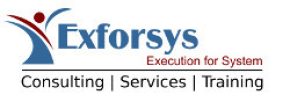C Circular Linked Lists
In this tutorial you will learn about C Programming – What is Circular Linked List, Adding Nodes to Circular Linked Lists, Traversing a Circularly Linked List and working with Circularly Linked List Example. Circular linked lists are usually used for a queue or stack type situation, or for implementing a round robin algorithm in system level programming. You could also use one for a multiplayer game where you were keeping track of player’s turns where it just repeats until the game ends. They are exactly the same as a singly…
Read More
